Biden given inconclusive intelligence report on Covid origins
Issued on: 25/08/2021 -

Experts are increasingly open to considering the theory that the virus might have leaked out of a lab conducting bat coronavirus research in Wuhan
Hector RETAMAL AFP
Washington (AFP)
A classified US intelligence report delivered to the White House on Tuesday was inconclusive on the origins of the Covid-19 pandemic, in part due to a lack of information from China, according to US media reports.
The assessment, which was ordered by President Joe Biden 90 days ago, was unable to definitively conclude whether the virus that first emerged in central China had jumped to humans via animals or escaped a highly secure research facility in Wuhan, two US officials familiar with the matter told the Washington Post.
They said parts of the report could be declassified in the coming days.
The debate over the origins of the virus that has killed more than four million people and paralyzed economies worldwide has become increasingly contentious.
When Biden assigned the investigation, he said US intelligence agencies were split over the "two likely scenarios" -- animals or lab.
Former president Donald Trump and his aides had helped fuel the lab-leak theory amid intense criticism over their administration's handling of the world's biggest outbreak, pointing the finger at Beijing, which strongly denies the hypothesis.
Despite Biden's directive that the intelligence community "redouble their efforts" to untangle the origin debate, the 90-day review brought them no closer to consensus, the officials told the Post.
Part of the problem is a lack of detailed information from China, according to the Wall Street Journal.
"If China's not going to give access to certain data sets, you're never really going to know," an official told the Journal on condition of anonymity since the report is not public.
Beijing has rejected calls from the United States and other countries for a renewed origin probe after a heavily politicized visit by a World Health Organization team in January also proved inconclusive and faced criticism for lacking transparency and access.
Pressure has meanwhile increased to evaluate the lab-leak theory more thoroughly.
At the outset of the pandemic, the natural origin hypothesis -- that the virus emerged in bats then passed to humans, likely via an intermediary species -- was widely accepted. But as time has worn on, scientists have not found a virus in either bats or another animal that matches the genetic signature of SARS-CoV-2.
In the face of China's reluctance to open up to outside investigators, experts are increasingly open to considering the theory that the virus might have leaked out of a lab conducting bat coronavirus research in Wuhan, an idea once dismissed as a conspiracy propagated by the US far-right.
WHO chief Tedros Adhanom Ghebreyesus has admitted that the global health body's initial probe into Wuhan's virology labs did not go far enough.
But the WHO's call last month for the investigation's second stage to include audits of the labs infuriated Beijing. Vice health minister Zeng Yixin said the plan showed "disrespect for common sense and arrogance towards science."
© 2021 AFP
Washington (AFP)
A classified US intelligence report delivered to the White House on Tuesday was inconclusive on the origins of the Covid-19 pandemic, in part due to a lack of information from China, according to US media reports.
The assessment, which was ordered by President Joe Biden 90 days ago, was unable to definitively conclude whether the virus that first emerged in central China had jumped to humans via animals or escaped a highly secure research facility in Wuhan, two US officials familiar with the matter told the Washington Post.
They said parts of the report could be declassified in the coming days.
The debate over the origins of the virus that has killed more than four million people and paralyzed economies worldwide has become increasingly contentious.
When Biden assigned the investigation, he said US intelligence agencies were split over the "two likely scenarios" -- animals or lab.
Former president Donald Trump and his aides had helped fuel the lab-leak theory amid intense criticism over their administration's handling of the world's biggest outbreak, pointing the finger at Beijing, which strongly denies the hypothesis.
Despite Biden's directive that the intelligence community "redouble their efforts" to untangle the origin debate, the 90-day review brought them no closer to consensus, the officials told the Post.
Part of the problem is a lack of detailed information from China, according to the Wall Street Journal.
"If China's not going to give access to certain data sets, you're never really going to know," an official told the Journal on condition of anonymity since the report is not public.
Beijing has rejected calls from the United States and other countries for a renewed origin probe after a heavily politicized visit by a World Health Organization team in January also proved inconclusive and faced criticism for lacking transparency and access.
Pressure has meanwhile increased to evaluate the lab-leak theory more thoroughly.
At the outset of the pandemic, the natural origin hypothesis -- that the virus emerged in bats then passed to humans, likely via an intermediary species -- was widely accepted. But as time has worn on, scientists have not found a virus in either bats or another animal that matches the genetic signature of SARS-CoV-2.
In the face of China's reluctance to open up to outside investigators, experts are increasingly open to considering the theory that the virus might have leaked out of a lab conducting bat coronavirus research in Wuhan, an idea once dismissed as a conspiracy propagated by the US far-right.
WHO chief Tedros Adhanom Ghebreyesus has admitted that the global health body's initial probe into Wuhan's virology labs did not go far enough.
But the WHO's call last month for the investigation's second stage to include audits of the labs infuriated Beijing. Vice health minister Zeng Yixin said the plan showed "disrespect for common sense and arrogance towards science."
© 2021 AFP
What do we know about the origin of the pandemic?
A US investigation into the origin of the coronavirus pandemic is due to conclude.
A US investigation into the origin of the coronavirus pandemic is due to conclude.
Was there a laboratory accident?
What animal did the virus come from? Here is what we know so far.
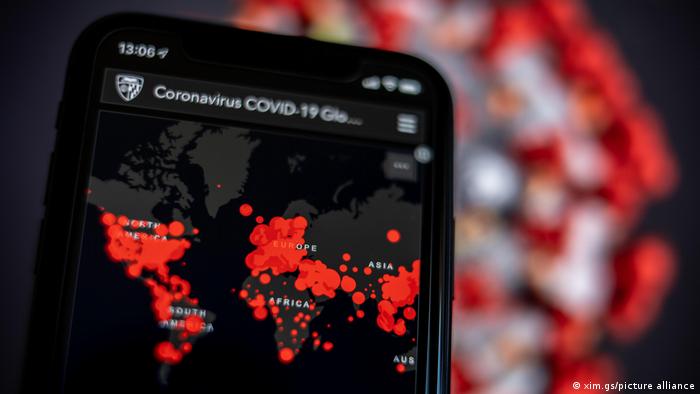
In March 2020 the World Health Organisation declared a global pandemic.
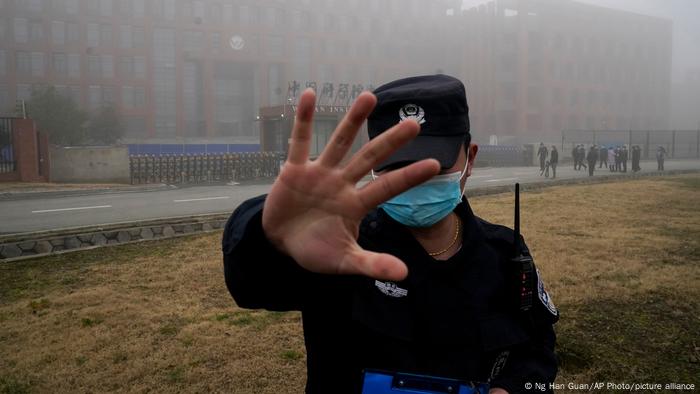
China is blocking an open investigation and rejects any notion of a possible infection at the Wuhan institute
"The US will continue to work with like-minded partners to pressure China to participate in a full, transparent, fact-based international investigation and provide access to all relevant data and evidence," Biden said.
China, however, accused the US of trying to politicize the search and blame China for the pandemic. At the same time, Bejing is blocking an open-ended investigation and categorically rejects any responsibility on principle.
What is known about the virus?
As early as January 2020, Chinese scientists found the cause for a cluster of a previously unknown pneumonia infections that had killed a surprisingly high number of people in the city of Wuhan. They found the genes of a positive-stranded RNA virus from the coronavirus family in respiratory cells of the patients. The researchers could intentify the virus as belonging to subgroup B (betacoronavirus).
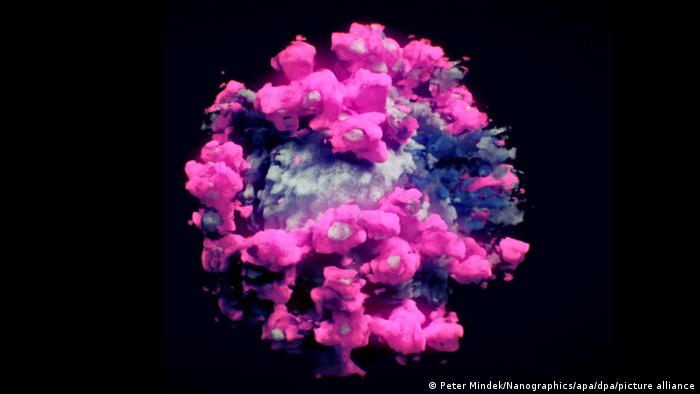
This is not a computer simulation but an actual image of the virus, taken by researchers of the Vienna-based Nanographics startup company.
This virus was definitely completely new, but had great similarities to the coronavirus that had caused the SARS pandemic between 2002-2004, also named SARS-CoV-1. Starting in southern China, that previous virus had spread to almost all continents within a few weeks. Worldwide, 8,096 people were diagnosed with severe acute respiratory syndrome (SARS) and 774 died.
Even though the number of cases was low compared to the current SARS-CoV-2 pandemic, it was already demonstrated at the time how frighteningly quickly a highly infectious disease can spread in a globalized world.
Where was the virus first discovered?
Some studies suggest that the new SARS-CoV-2 virus had been spreading for several weeks or even months before it was discovered in Wuhan in late December 2019.
In China, according to the South China Morning Post, there had already been a first confirmed infection with SARS-CoV-2 in mid-November. However, this does not mean that the virus necessarily originated in China.

Authorities completely sealed off Wuhan after the emergence of the virus
Researchers at the University of Cambridge had published a study in April 2020 suggesting that the pandemic most likely began between September and early December 2019 ― either in China or a neighboring country.
But traces of the novel pathogen were also found in stored wastewater samples from Brazil and Italy that had already been collected in November and December 2019, respectively. In Italy, antibodies to SARS-CoV-2 were also found in blood samples from participants in a lung cancer screening program. Astonishingly, some of the blood samples had already been collected in September 2019, others in February 2020. There was some uncertainty about the findings, however.
The fact that the virus was already detected sporadically in Europe in the late fall of 2019 and in China from mid-November does not allow any reliable conclusions to be drawn about the origin of the pandemic. It merely shows how quickly a highly aggressive virus can spread across the world.
From which animal did the virus originate?
The most likely scenario is a zoological origin via an intermediate host. That would mean some animal carried the original virus, then passed it on to another animal and that animal passed it to the first human. So far, however, neither the potential source animal nor the intermediate host has been identified beyond a doubt. The two SARS coronaviruses have not yet been clearly identified in animals either.
However, the two SARS viruses are definitely related to coronaviruses found in certain bat species found in Southeast Asia. In addition, studies have traced previous epidemics involving coronaviruses such as SARS and Middle Eastern Respiratory Syndrome (MERS) to bats as well.
The gene sequence of the current SARS-CoV-2 is a 96.2% match with coronavirus RaTG13, which was previously found in a horseshoe bat.
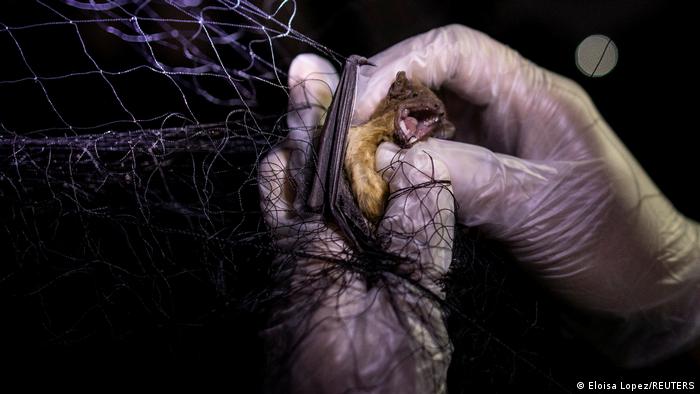
Researchers are regularly taking samples from bats because the animals are considered a hotbed for dangerous viruses
More than 96% sounds like a lot, but it is only a first indication. This is because even the match with, for example, a coronavirus detected in pangolins is only slightly lower.
Since most people do not normally have direct contact with horseshoe bats or pangolins, the experts are also investigating potential intermediate hosts that are in closer contact with humans, such as minks, martens and civets. Minks for example can catch SARS-CoV-2 from humans comparatively easily. A transmission from animals to humans is less likely, but possible.
Berlin virologist Christian Drosten also believes an origin of SARS-CoV-2 in the fur industry is the most plausible explanation.
"I don't have any evidence for that, except the clearly proven origin of SARS-CoV-1, and this is a virus of the same species. Viruses of the same species do the same things and often have the same origin," Drosten told the Swiss online magazine Republik.
With the first SARS virus, the transitional hosts were racoon dogs and Viverridae, Drosten said. "That's backed up by science."
In China, racoon dogs are still used in the fur industry on a large scale, Drosten says. He explains that wild racoon dogs are repeatedly brought into breeding operations. And these animals may have previously eaten bats ― considered the most likely source of Sars-CoV-2.
"Racoon dogs and Viverridae are often skinned while they are still alive," the Charité virologist explained. They emit death cries, and roar, and aerosols are produced in the process. That's how humans can become infected with the virus.
For him, he said, it was surprising to see that this form of breeding would still come into play again as a possible starting point for a pandemic. Until recently, he had mistakenly believed, "somewhat naively," he admitted, that authorities had introduced stiffer controls on the breeding of species with a known potential as transitional hosts.
"To me, that story was closed and done. I thought that this kind of animal trafficking had been stopped and that it would never come back. And now SARS has come back."
Drosten acknowledged that there is no concrete evidence yet that the transition to humans occurred through fur farms. There have been no studies in this area at all, at least none have become public, he said.
Did the virus come from a laboratory?
Evidence shows that the Wuhan Institute of Virology experimented with the coronavirus RaTG13 and with RmYN02, whose gene sequence is 93.3% identical to SARS-CoV-2. That means there are two unproven scenarios: SARS-CoV-2 could have been either artificially created as a type of bioweapon and/or released by accident.
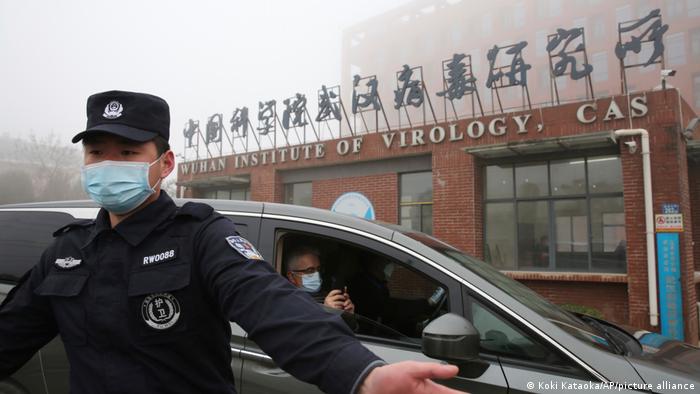
The Wuhan Institut of Virology was conducting research focusing on bat viruses
The WHO experts sent to China consider both scenarios "extremely unlikely." However, they were not really able to gather convincing evidence to dismiss the theories outright either. During their very limited investigation in early 2021, about a year after the start of the pandemic, they could not conduct their own inspections or evidence gathering; China did not allow that.
Instead, they had to rely on publicly available data and information from their Chinese interlocutors. After the trip, even WHO chief Tedros Adhanom Ghebreyesus demanded to at least further examine the hypothesis of a laboratory accident in Wuhan.
What is the evidence for a biological weapon?
Most experts consider the artificial generation of SARS-CoV-2 in a research lab in Wuhan to be highly unlikely. A team led by Swedish microbiology professor Kristian Andersen of the Scripps Research Institute in La Jolla, California, studied primarily the prominent spike proteins on the virus surface, where the virus docks to a host cell in the lungs or throat to invade it.
Genome sequencing revealed two significant differences between SARS-CoV-2 and its corona relatives. The protein is structured differently and the amino acids are composed differently. While this may make it easier for the SARS-CoV-2 virus to infect human cells, the virus structure is not sophisticated enough for a "biological weapon," according to the La Jolla team.
What's to make of WHO probe into pandemic's origins?
Drosten, the virologist from Berlin, also considers it "extremely unlikely" that the virus originated in a laboratory. "If someone had developed SARS-CoV-2 like this, I would say they did it in a pretty untargeted way."
With the first SARS virus as a basis, Drosten said, researchers would have been more likely to change only very specific characteristics for research purposes. SARS-CoV-2, however, is full of deviations from the first virus, he explained, indicating that those likely developed as part of a natural process.
What speaks for a laboratory accident?
The theory that the Chinese researchers experimented with the dangerous coronaviruses such as RaTG13 or RmYN02 and that SARS-CoV-2 was released by accident remains. Chinese leadership categorically rules this out.
The WHO experts sent to China also classify such an accident as "extremely unlikely," on the basis of the data available to them. Among other things, the evolution of the virus speaks against this. In addition, the Wuhan Institute of Virology uses appropriate high-security laboratories. And there are no indications of laboratory accidents or suspicious illnesses among employees in the data shared with the WHO investigators.
But the data don't seem to tell the whole truth, according to the US. intelligence report cited by the Wall Street Journal. There was no mention of the three employees of the institute who in November 2019 reportedly fell so severely ill with COVID-like symptoms that they had to be treated in a clinic. Then again, China claims that never happened.
This article was translated from German.
DW RECOMMENDS
The US and 13 other countries have lamented the lack of access given to WHO experts during an investigation into the origins of the coronavirus. China has accused opponents of "politicizing the issue."
Date 24.08.2021
Author Alexander Freund
Related Subjects People's Republic of China, World Health Organization (WHO), Biden, Joe , US Election 2020, Coronavirus
Keywords China, pandemic, laboratory accident, SARS CoV-2, WHO, COVID-19, Joe Biden, coronavirus
Send us your feedback.
Print Print this page
Permalink https://p.dw.com/p/3zQKA

In March 2020 the World Health Organisation declared a global pandemic.
The map shows global infections shortly thereafter.
Wednesday, August 25 marks the end of a 90-day deadline set by US President Joe Biden for US intelligence agencies to compile everything they know about the origin of the SARS-CoV-2 coronavirus. Here is an overview of what is already publicly known on the eve of the report:
Since SARS-CoV-2 became known to the world in early 2020, nearly 210 million people worldwide have been infected with it. More than 4.3 million people have died from or with the virus. And the pandemic has crippled economies for months on end. But where did this highly contagious virus come from? So far, there is more conjecture than fact as to where the global pandemic originated.
In May 2021, the Wall Street Journal reported on a possible accident at the Institute of Virology in Wuhan, citing an earlier unpublished US intelligence report.
It said that in November 2019, three employees at the institute fell so seriously ill with COVID-like symptoms that they had to be treated in a clinic. China denied this. It was as a consequence of this that US President Joe Biden ordered the intelligence community on May 27 to gather reliable facts rather than speculation about a possible lab accident.
Wednesday, August 25 marks the end of a 90-day deadline set by US President Joe Biden for US intelligence agencies to compile everything they know about the origin of the SARS-CoV-2 coronavirus. Here is an overview of what is already publicly known on the eve of the report:
Since SARS-CoV-2 became known to the world in early 2020, nearly 210 million people worldwide have been infected with it. More than 4.3 million people have died from or with the virus. And the pandemic has crippled economies for months on end. But where did this highly contagious virus come from? So far, there is more conjecture than fact as to where the global pandemic originated.
In May 2021, the Wall Street Journal reported on a possible accident at the Institute of Virology in Wuhan, citing an earlier unpublished US intelligence report.
It said that in November 2019, three employees at the institute fell so seriously ill with COVID-like symptoms that they had to be treated in a clinic. China denied this. It was as a consequence of this that US President Joe Biden ordered the intelligence community on May 27 to gather reliable facts rather than speculation about a possible lab accident.

China is blocking an open investigation and rejects any notion of a possible infection at the Wuhan institute
"The US will continue to work with like-minded partners to pressure China to participate in a full, transparent, fact-based international investigation and provide access to all relevant data and evidence," Biden said.
China, however, accused the US of trying to politicize the search and blame China for the pandemic. At the same time, Bejing is blocking an open-ended investigation and categorically rejects any responsibility on principle.
What is known about the virus?
As early as January 2020, Chinese scientists found the cause for a cluster of a previously unknown pneumonia infections that had killed a surprisingly high number of people in the city of Wuhan. They found the genes of a positive-stranded RNA virus from the coronavirus family in respiratory cells of the patients. The researchers could intentify the virus as belonging to subgroup B (betacoronavirus).

This is not a computer simulation but an actual image of the virus, taken by researchers of the Vienna-based Nanographics startup company.
This virus was definitely completely new, but had great similarities to the coronavirus that had caused the SARS pandemic between 2002-2004, also named SARS-CoV-1. Starting in southern China, that previous virus had spread to almost all continents within a few weeks. Worldwide, 8,096 people were diagnosed with severe acute respiratory syndrome (SARS) and 774 died.
Even though the number of cases was low compared to the current SARS-CoV-2 pandemic, it was already demonstrated at the time how frighteningly quickly a highly infectious disease can spread in a globalized world.
Where was the virus first discovered?
Some studies suggest that the new SARS-CoV-2 virus had been spreading for several weeks or even months before it was discovered in Wuhan in late December 2019.
In China, according to the South China Morning Post, there had already been a first confirmed infection with SARS-CoV-2 in mid-November. However, this does not mean that the virus necessarily originated in China.

Authorities completely sealed off Wuhan after the emergence of the virus
Researchers at the University of Cambridge had published a study in April 2020 suggesting that the pandemic most likely began between September and early December 2019 ― either in China or a neighboring country.
But traces of the novel pathogen were also found in stored wastewater samples from Brazil and Italy that had already been collected in November and December 2019, respectively. In Italy, antibodies to SARS-CoV-2 were also found in blood samples from participants in a lung cancer screening program. Astonishingly, some of the blood samples had already been collected in September 2019, others in February 2020. There was some uncertainty about the findings, however.
The fact that the virus was already detected sporadically in Europe in the late fall of 2019 and in China from mid-November does not allow any reliable conclusions to be drawn about the origin of the pandemic. It merely shows how quickly a highly aggressive virus can spread across the world.
From which animal did the virus originate?
The most likely scenario is a zoological origin via an intermediate host. That would mean some animal carried the original virus, then passed it on to another animal and that animal passed it to the first human. So far, however, neither the potential source animal nor the intermediate host has been identified beyond a doubt. The two SARS coronaviruses have not yet been clearly identified in animals either.
However, the two SARS viruses are definitely related to coronaviruses found in certain bat species found in Southeast Asia. In addition, studies have traced previous epidemics involving coronaviruses such as SARS and Middle Eastern Respiratory Syndrome (MERS) to bats as well.
The gene sequence of the current SARS-CoV-2 is a 96.2% match with coronavirus RaTG13, which was previously found in a horseshoe bat.

Researchers are regularly taking samples from bats because the animals are considered a hotbed for dangerous viruses
More than 96% sounds like a lot, but it is only a first indication. This is because even the match with, for example, a coronavirus detected in pangolins is only slightly lower.
Since most people do not normally have direct contact with horseshoe bats or pangolins, the experts are also investigating potential intermediate hosts that are in closer contact with humans, such as minks, martens and civets. Minks for example can catch SARS-CoV-2 from humans comparatively easily. A transmission from animals to humans is less likely, but possible.
Berlin virologist Christian Drosten also believes an origin of SARS-CoV-2 in the fur industry is the most plausible explanation.
"I don't have any evidence for that, except the clearly proven origin of SARS-CoV-1, and this is a virus of the same species. Viruses of the same species do the same things and often have the same origin," Drosten told the Swiss online magazine Republik.
With the first SARS virus, the transitional hosts were racoon dogs and Viverridae, Drosten said. "That's backed up by science."
In China, racoon dogs are still used in the fur industry on a large scale, Drosten says. He explains that wild racoon dogs are repeatedly brought into breeding operations. And these animals may have previously eaten bats ― considered the most likely source of Sars-CoV-2.
"Racoon dogs and Viverridae are often skinned while they are still alive," the Charité virologist explained. They emit death cries, and roar, and aerosols are produced in the process. That's how humans can become infected with the virus.
For him, he said, it was surprising to see that this form of breeding would still come into play again as a possible starting point for a pandemic. Until recently, he had mistakenly believed, "somewhat naively," he admitted, that authorities had introduced stiffer controls on the breeding of species with a known potential as transitional hosts.
"To me, that story was closed and done. I thought that this kind of animal trafficking had been stopped and that it would never come back. And now SARS has come back."
Drosten acknowledged that there is no concrete evidence yet that the transition to humans occurred through fur farms. There have been no studies in this area at all, at least none have become public, he said.
Did the virus come from a laboratory?
Evidence shows that the Wuhan Institute of Virology experimented with the coronavirus RaTG13 and with RmYN02, whose gene sequence is 93.3% identical to SARS-CoV-2. That means there are two unproven scenarios: SARS-CoV-2 could have been either artificially created as a type of bioweapon and/or released by accident.

The Wuhan Institut of Virology was conducting research focusing on bat viruses
The WHO experts sent to China consider both scenarios "extremely unlikely." However, they were not really able to gather convincing evidence to dismiss the theories outright either. During their very limited investigation in early 2021, about a year after the start of the pandemic, they could not conduct their own inspections or evidence gathering; China did not allow that.
Instead, they had to rely on publicly available data and information from their Chinese interlocutors. After the trip, even WHO chief Tedros Adhanom Ghebreyesus demanded to at least further examine the hypothesis of a laboratory accident in Wuhan.
What is the evidence for a biological weapon?
Most experts consider the artificial generation of SARS-CoV-2 in a research lab in Wuhan to be highly unlikely. A team led by Swedish microbiology professor Kristian Andersen of the Scripps Research Institute in La Jolla, California, studied primarily the prominent spike proteins on the virus surface, where the virus docks to a host cell in the lungs or throat to invade it.
Genome sequencing revealed two significant differences between SARS-CoV-2 and its corona relatives. The protein is structured differently and the amino acids are composed differently. While this may make it easier for the SARS-CoV-2 virus to infect human cells, the virus structure is not sophisticated enough for a "biological weapon," according to the La Jolla team.
What's to make of WHO probe into pandemic's origins?
Drosten, the virologist from Berlin, also considers it "extremely unlikely" that the virus originated in a laboratory. "If someone had developed SARS-CoV-2 like this, I would say they did it in a pretty untargeted way."
With the first SARS virus as a basis, Drosten said, researchers would have been more likely to change only very specific characteristics for research purposes. SARS-CoV-2, however, is full of deviations from the first virus, he explained, indicating that those likely developed as part of a natural process.
What speaks for a laboratory accident?
The theory that the Chinese researchers experimented with the dangerous coronaviruses such as RaTG13 or RmYN02 and that SARS-CoV-2 was released by accident remains. Chinese leadership categorically rules this out.
The WHO experts sent to China also classify such an accident as "extremely unlikely," on the basis of the data available to them. Among other things, the evolution of the virus speaks against this. In addition, the Wuhan Institute of Virology uses appropriate high-security laboratories. And there are no indications of laboratory accidents or suspicious illnesses among employees in the data shared with the WHO investigators.
But the data don't seem to tell the whole truth, according to the US. intelligence report cited by the Wall Street Journal. There was no mention of the three employees of the institute who in November 2019 reportedly fell so severely ill with COVID-like symptoms that they had to be treated in a clinic. Then again, China claims that never happened.
This article was translated from German.
DOGS AND CATS CAN ALSO BE INFECTED WITH CORONAVIRUSBetter keep your distance in case of COVIDThat's how to do it: If humans have COVID-19, dogs had better cuddle with their stuffed animals. Researchers from Utrecht in the Netherlands took nasal swabs and blood samples from 48 cats and 54 dogs whose owners had contracted COVID-19 in the last 200 days. Lo and behold, they found the virus in 17.4% of cases. Of the animals, 4.2% also showed symptoms.
DW RECOMMENDS
The US and 13 other countries have lamented the lack of access given to WHO experts during an investigation into the origins of the coronavirus. China has accused opponents of "politicizing the issue."
Date 24.08.2021
Author Alexander Freund
Related Subjects People's Republic of China, World Health Organization (WHO), Biden, Joe , US Election 2020, Coronavirus
Keywords China, pandemic, laboratory accident, SARS CoV-2, WHO, COVID-19, Joe Biden, coronavirus
Send us your feedback.
Print Print this page
Permalink https://p.dw.com/p/3zQKA
COVID: 14 countries cast doubt over WHO virus origin report
The US and 13 other countries have lamented the lack of access given to WHO experts during an investigation into the origins of the coronavirus. China has accused opponents of "politicizing the issue."
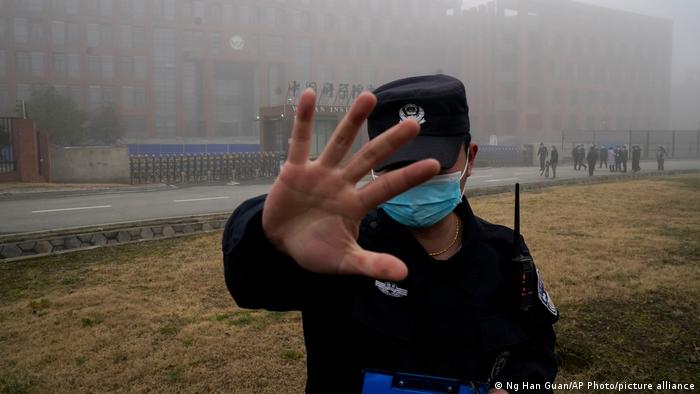
The US is among 14 countries to suggest China was obstructive during a WHO investigation into the origins of the coronavirus
The United States has led a chorus of concern over a World Health Organization (WHO) report into the origins of the coronavirus.
A joint WHO-China study published on Tuesday said transmission of the virus from bats to humans through another animal is the most plausible explanation of the origins of the pandemic. The report added that a China-responsible laboratory leak is "extremely unlikely."
The US, however, was among 14 countries to express skepticism over the investigation, saying it lacked the data and samples required.
WHO: Impossible to draw conclusions
Even WHO chief Tedros Adhanom Ghebreyesus admitted that the experts found it difficult to get raw data and that the report did not gather sufficient evidence from which to garner concrete conclusions.
"I do not believe that this assessment was extensive enough," he told the UN health agency's 194 member states in a briefing on Tuesday.
"Further data and studies will be needed to reach more robust conclusions," he continued.
"Although the team has concluded that a laboratory leak is the least likely hypothesis, this requires further investigation, potentially with additional missions involving specialist experts, which I am ready to deploy."
Watch video00:23
Merkel: 'We have to be able to trust our vaccines'
US-led statement cites lack of access
The United States released a statement along with 13 of its allies, saying the inquiry had fallen short, amid accusations that Chinese officials failed to give proper access to investigators.
Nevertheless, neither Tedros nor the US-led statement mentioned China directly.
The US State Department said the 14 countries were calling for "momentum" for a second-phase look by experts and pointed to the need for further animal studies "to find the means of introduction into humans" of the coronavirus.
The countries expressed support for WHO's experts and staff, citing their "tireless" work. But the statement said the study had been "significantly delayed and lacked access to complete, original data and samples."
Critics have accused China of using delaying tactics and that Beijing took too long to grant permission for a WHO investigation.
The State Department named Australia, Britain, Canada, Czechia, Denmark, Estonia, Israel, Japan, Latvia, Lithuania, Norway, Slovenia and South Korea as the co-signers of the statement.
Response prompts anger from China
Beijing, however, hit back at suggestions it was anything but helpful during the process, saying that it had demonstrated "openness, transparency and a responsible attitude."
"To politicize this issue will only severely hinder global cooperation in study of origins, jeopardize anti-pandemic cooperation, and cost more lives," the Chinese Foreign Ministry said in a statement.
The European Union called the report a "helpful first step" but highlighted "the need for further work."
The pandemic has killed nearly 2.8 million people worldwide since it first emerged in Wuhan in December 2019, with several countries now battling new waves of infection.
The US and 13 other countries have lamented the lack of access given to WHO experts during an investigation into the origins of the coronavirus. China has accused opponents of "politicizing the issue."

The US is among 14 countries to suggest China was obstructive during a WHO investigation into the origins of the coronavirus
The United States has led a chorus of concern over a World Health Organization (WHO) report into the origins of the coronavirus.
A joint WHO-China study published on Tuesday said transmission of the virus from bats to humans through another animal is the most plausible explanation of the origins of the pandemic. The report added that a China-responsible laboratory leak is "extremely unlikely."
The US, however, was among 14 countries to express skepticism over the investigation, saying it lacked the data and samples required.
WHO: Impossible to draw conclusions
Even WHO chief Tedros Adhanom Ghebreyesus admitted that the experts found it difficult to get raw data and that the report did not gather sufficient evidence from which to garner concrete conclusions.
"I do not believe that this assessment was extensive enough," he told the UN health agency's 194 member states in a briefing on Tuesday.
"Further data and studies will be needed to reach more robust conclusions," he continued.
"Although the team has concluded that a laboratory leak is the least likely hypothesis, this requires further investigation, potentially with additional missions involving specialist experts, which I am ready to deploy."
Watch video00:23
Merkel: 'We have to be able to trust our vaccines'
US-led statement cites lack of access
The United States released a statement along with 13 of its allies, saying the inquiry had fallen short, amid accusations that Chinese officials failed to give proper access to investigators.
Nevertheless, neither Tedros nor the US-led statement mentioned China directly.
The US State Department said the 14 countries were calling for "momentum" for a second-phase look by experts and pointed to the need for further animal studies "to find the means of introduction into humans" of the coronavirus.
The countries expressed support for WHO's experts and staff, citing their "tireless" work. But the statement said the study had been "significantly delayed and lacked access to complete, original data and samples."
Critics have accused China of using delaying tactics and that Beijing took too long to grant permission for a WHO investigation.
The State Department named Australia, Britain, Canada, Czechia, Denmark, Estonia, Israel, Japan, Latvia, Lithuania, Norway, Slovenia and South Korea as the co-signers of the statement.
Response prompts anger from China
Beijing, however, hit back at suggestions it was anything but helpful during the process, saying that it had demonstrated "openness, transparency and a responsible attitude."
"To politicize this issue will only severely hinder global cooperation in study of origins, jeopardize anti-pandemic cooperation, and cost more lives," the Chinese Foreign Ministry said in a statement.
The European Union called the report a "helpful first step" but highlighted "the need for further work."
The pandemic has killed nearly 2.8 million people worldwide since it first emerged in Wuhan in December 2019, with several countries now battling new waves of infection.
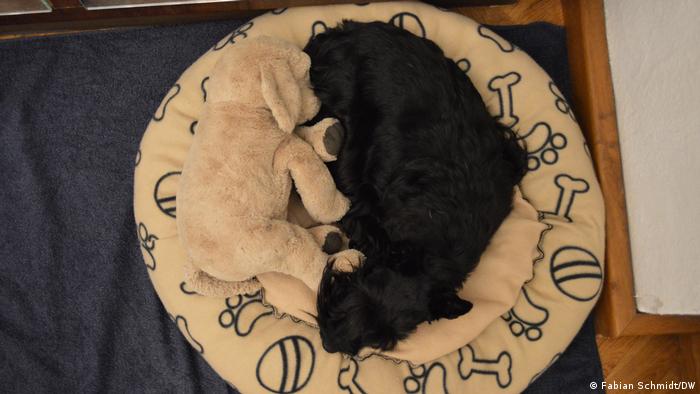
No comments:
Post a Comment